This post was written by Chad Rubin, CEO of Skubana. Skubana is the leading ecommerce platform that enables multi-channel brands to unify their back-office operations. Skubana serves as your operational nervous system, providing a centralized platform to handle inventory management, order fulfillment and business intelligence. Skubana empowers e-commerce brands to improve their operational efficiency and make smarter business decisions.
When building a fashion brand online, one of the most crucial aspects of increasing your audience and your sales is brand awareness. This doesn’t just mean creating an identity that consumers are aware of, but one that they want to engage with.
The marketplace for online fashion, however, is crowded. From established, high-end lines to fledgling T-shirt brands, if there are clothes and accessories to be sold, there’s a good chance that plenty of folks are already selling it.
That should by no means be a deterrent to building a successful retail line. Yes, it is competitive, but opportunity abounds everywhere.
How then can your online fashion brand grab hold of those available opportunities to establish and set your brand apart? Or create awareness and engagement that leads to a broader audience?
You master the art of content marketing.
More than the clothes and accessories you sell, modern consumers are after an experience, a feeling of being part of something greater. Approaching your brand as more than just a company that sells clothes will help you tap into this desire.
Creating that experience starts with great content and placing it where your current and soon to be fans will engage with it.
These five content marketing tips are not just for fashion startups either. If you already have an established online presence but are looking to boost your brand’s reach, several of these ideas may provide the lift you need.
Fashion & Beauty Benchmark Report
1. Embrace the Shareability Factor of Social Media
Social media for many brands can be a blessing and a curse. Facebook, Instagram, Pinterest, and Twitter are all fantastic avenues to showcase your products and build a following.
The downside is that it can be tough to earn meaningful traction when your posts get lost in a sea of other content. If you find yourself in a similar struggle, it might be time to reconsider what you’re posting.
Great social media content is more than just words and pictures. It should be useful, carry meaning, and most of all, possess high shareability.
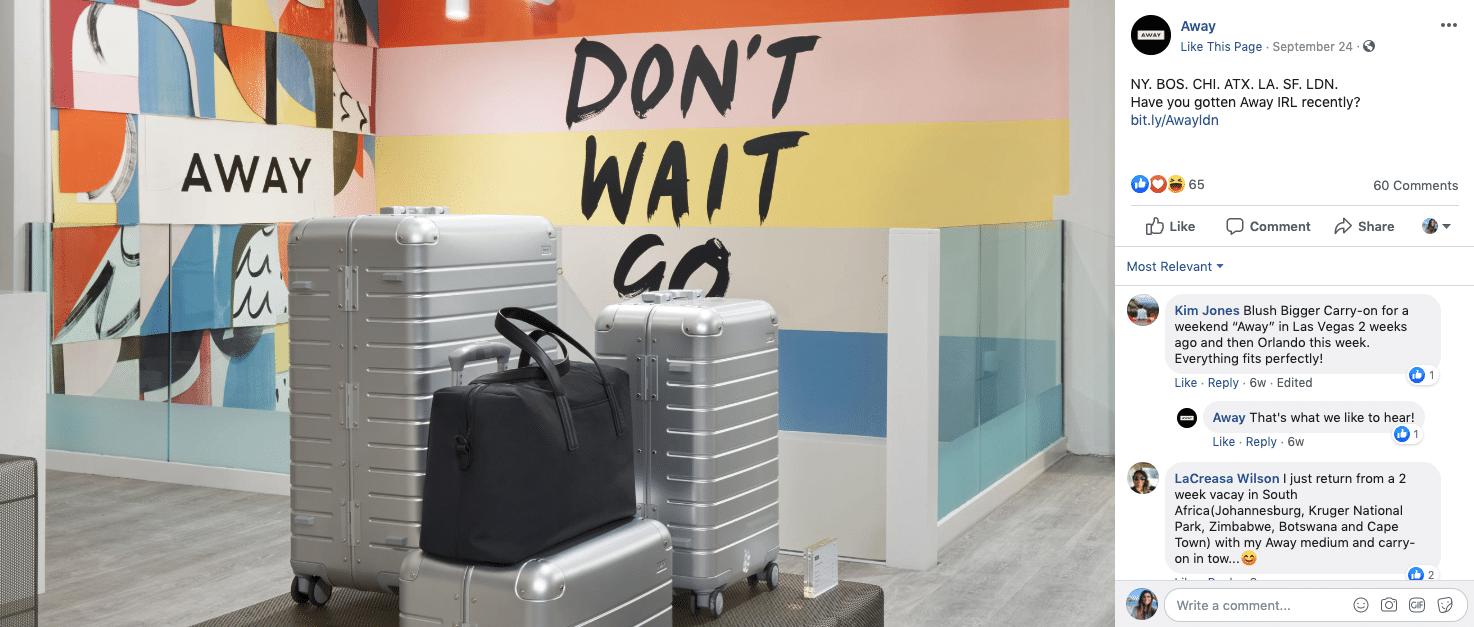
Image: Away
Generating content that others want to share with friends helps you create an organic following. Sure, you can spend ad dollars on Facebook, but that doesn’t create the all-important “buzzy” feel that is essential for a fashion brand to flourish among a new audience.
To increase your post shareability, research what’s popular on each media platform, and gear your content toward what people are consuming. One such example is video.
As the saying often goes in fashion, “You are either in, or you are out,” and video is very much in.
There’s plenty of video options that offer the perfect blend of content and product. Show your clothes in action and spotlight their purpose.
Do you sell athletic gear? Videos of people from your target audience biking, hiking, or doing yoga will reflect an active, healthy lifestyle brand. Or utilize user-generated content by encouraging your customers to create videos in action while wearing your brand, and then sharing those on your own channels.
If you favor whimsy in your branding, create a stark contrast with your videos – someone in your formal attire heading out for a hike.
Some products could cut across different audiences, and your content should do the same. A brand who does a great job at this is Nomatic. While their brand appeals to the world traveler, it also has different uses which come to life in the photos they post.

Image: Nomatic
Where and how you produce your video (and your other content like images, blogs or Twitter posts) will set the tone for what your brand represents and who it will resonate with.
Great and purposeful content is also about the value your audience gets from it. Cover topics that are central to your messaging and helpful for your audience—fashion tips and advice, more in-depth insight into your brand, or general interest topics that fit naturally with what interests your customers.
In each video, you can feature products you sell without any of it coming across as a blatant sales pitch. More than that though, you are providing your audience with content that is helpful, timely, and easily shared.
2. Identify Your Influencers
Fashion is about seeing and being seen. Achieving the reach you need to move your line upward is a tricky endeavor.
Enter the influencer — those internet sensations that have cultivated large followings thanks to knowing what’s in, what’s out, and what’s on the horizon.
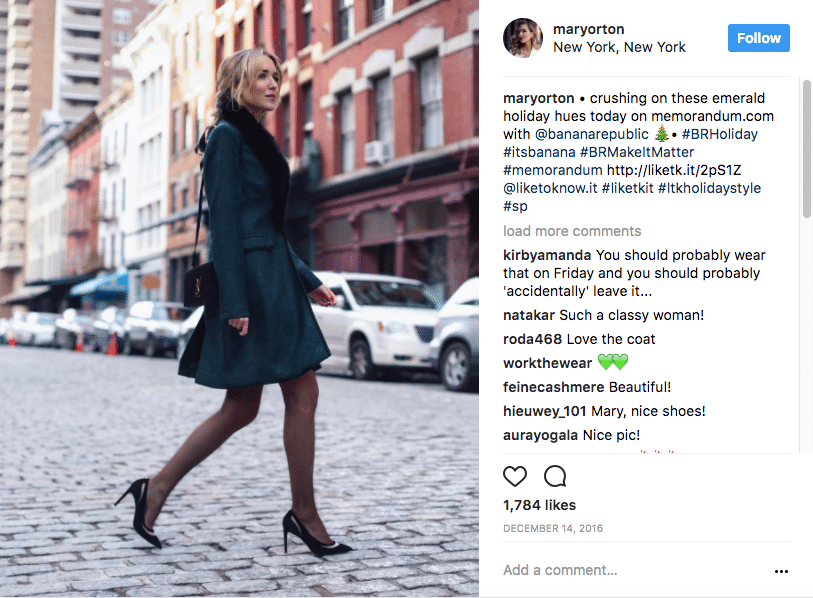
Image: mediakix
The best fashion bloggers and vloggers come with a savvy understanding of how to move the needle with content and messaging. In other words, they know how to tap into the desires of their audience, one that you—as their partner—will gain access to.
Even big name brands like Banana Republic understand the increasing value of the influencer.
Establishing a partnership with the right influencer helps you generate brand-specific content that the influencer can distribute among their followers.
Be it their blog, YouTube channel, Instagram account, or other social media accounts, this distribution method is a simple way to get your line noticed by new consumers across a wide array of channels.
Just remember that influencer marketing is often quid pro quo or exchange of the goods you sell for the services of the influencer.
Be prepared to work out arrangements that provide an influencer with freebies (you are asking them to create content around your products, after all) or offer their audience a unique discount.
In other cases, you may pay the influencer through more traditional monetary means, similar to an advertising or sponsorship deal.
In either case, influencer marketing is simply another way to reach a desired audience. Find the right influencer and the benefits far outweigh any costs.
3. Show Your Brand’s Many Possibilities
In fashion, clothing, or style, idea guides are incredibly helpful. If your brand offers up a wide range of clothing and accessories, the guide should be considered an absolutely necessary asset.
In this sense, Instagram immediately comes to mind as the place to be seen online when it comes to fashion. But your brand’s style inspiration can work on any social platform.
When it comes to fashion, shoppers don’t just want to browse static images of a single piece of clothing on a mannequin. They want to see what the clothing looks like on another human being or examples of full outfits pieced together to create a “look” they can achieve.
More than just showing people how to wear your fashion line, a style guide creates additional sales opportunities.
For example, if you show a customer how a belt complements the sweater they’ve been browsing, the belt is likely to end up in their shopping cart (along with the sweater).
Or present a coat alongside several outfits—casual, business, cocktail—to show how they can integrate it within their wardrobe.
High-level content like a style guide does require some effort on your part. However, there’s plenty of flexibility to create one to fit your brand. Trunk Club does a great job doing this, using images to showcase the kind of outfits customers can expect from their men’s fashion subscription service.
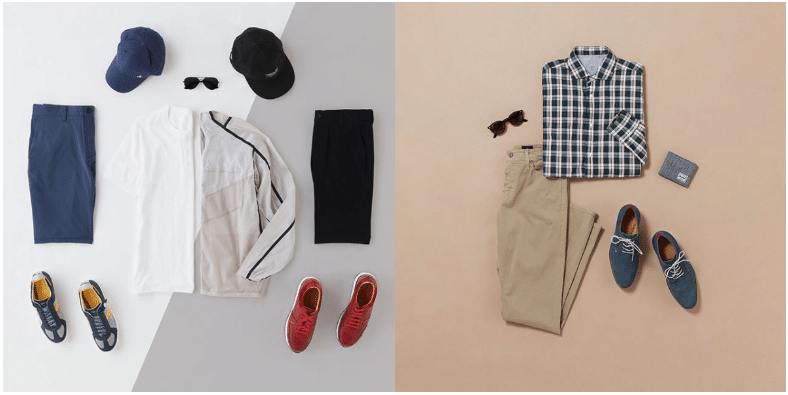
Image: Trunk Club
Smartphone photos of a simple pairing of shirts, pants, and shoes are enough to bring any style guide to life (check out Pinterest to see how dynamic this approach can be).
You can also invest in a good photographer and a few models to put together a photoshoot to give your guide a real-world feel.
Finally, if you want your style guide (and brand) to have some modern flair, consider adopting an augmented reality app for your website. This allows your audience to upload a picture of themselves and virtually “try-on” your clothing.
Apps like this already exist, but also consider partnering with a developer to create an AR feature specifically for your online store.
4. Make Your Website an Engagement Showcase
Speaking of your website, many fashion brands fall into the trap of believing that their online presence should be nothing more than their online store.
Indeed, your store should be the centerpiece of your company’s web identity — but don’t just stop there.
Develop a cache of supplemental content to both support your brand and provide your audience a more dynamic space to engage with it.
First, take the time to either create or expand your blog.
Blogs are excellent for both extending your brand and giving an audience useful information. For example, you can offer fashion advice or discuss a recent trend using a shorter blog post, while using long-form pieces to do a deep dive on your upcoming line.
Extended pieces are also great for providing info on broader subjects. For instance, write a preview of New York or Paris fashion week, or if you specialize in selling luggage, produce different city or vacation destination guides.
In short or long blog posts alike, images play the crucial role of putting your products on display.
We’ve already covered how great video content is for your brand. In addition to having a YouTube channel and posting on other social media, create a space on your website to house them as well.
If you really want to live in the moment, you can also be the host of a fashion podcast. While podcasting requires plenty of heavy lifting, if you have the means, it will prove an effective channel for your company.
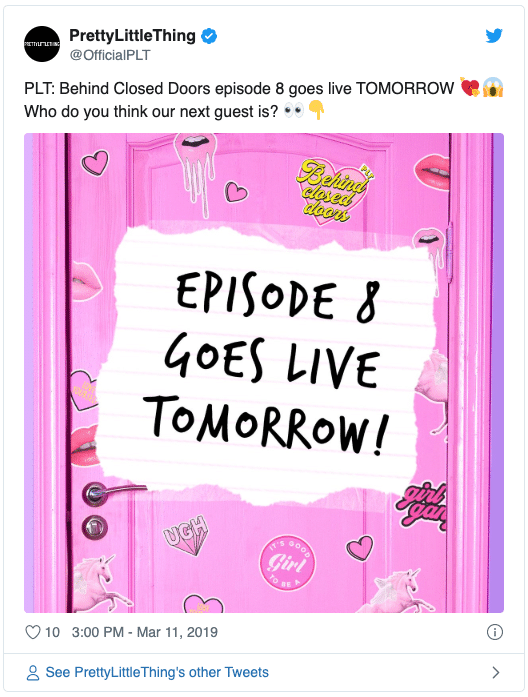
Image: econsultancy
An additional aspect to website-based content is that it helps customers find you. Blog posts, videos, and show notes created for podcasts are all rich with keywords that consumers use in online searches.
The key to managing an informative and resourceful website is to keep it focused and consistent. If you commit to a blog, post regularly, and always produce pieces that provide value to your audience.
But you shouldn’t only rely on SEO to help drive traffic to your pages. You can give your content extra legs by using native advertising. This allows you to place advertisements for your content on the websites and platforms that your target audiences are already tapped into. Because they are already consuming content, the likelihood of them clicking through to your pages will be higher. You could also use this to track and re-engage people who have already visited your site – driving them back to your content from related websites.
Taboola powers recommendations for advertisers all over the world in the form of native ads, as well as other advertising formats. Get started in just a few steps.
As your customer base grows, your consumers will come to know you for both the products you sell and the content you produce. It’s a powerful advantage that will set you apart from your competition.
5. Capture the Moment
Our final content marketing tip is two tips in one, but they both serve the same purpose — to get your customers directly involved with your brand.
Similar to an influencer, engaging with individual customers can propel your brand in a number of directions.
You can achieve this in several ways.
Create contests or giveaways that require a comment or photograph ifn your clothing to gain entry. You can tailor this to specific media channels if you’re trying to target a particular audience base.
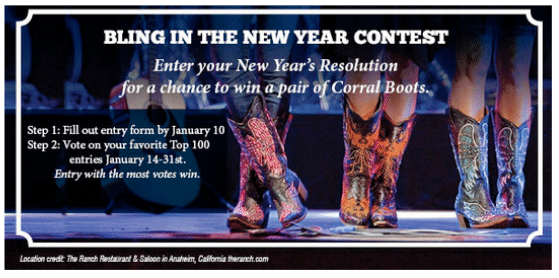
Image: Ecwid
Tap into issues or causes your customers care about and that align with your brand’s beliefs by asking them to share those values. You can spotlight that feedback by promoting it on your website, social media pages, or generating additional content for people to share.
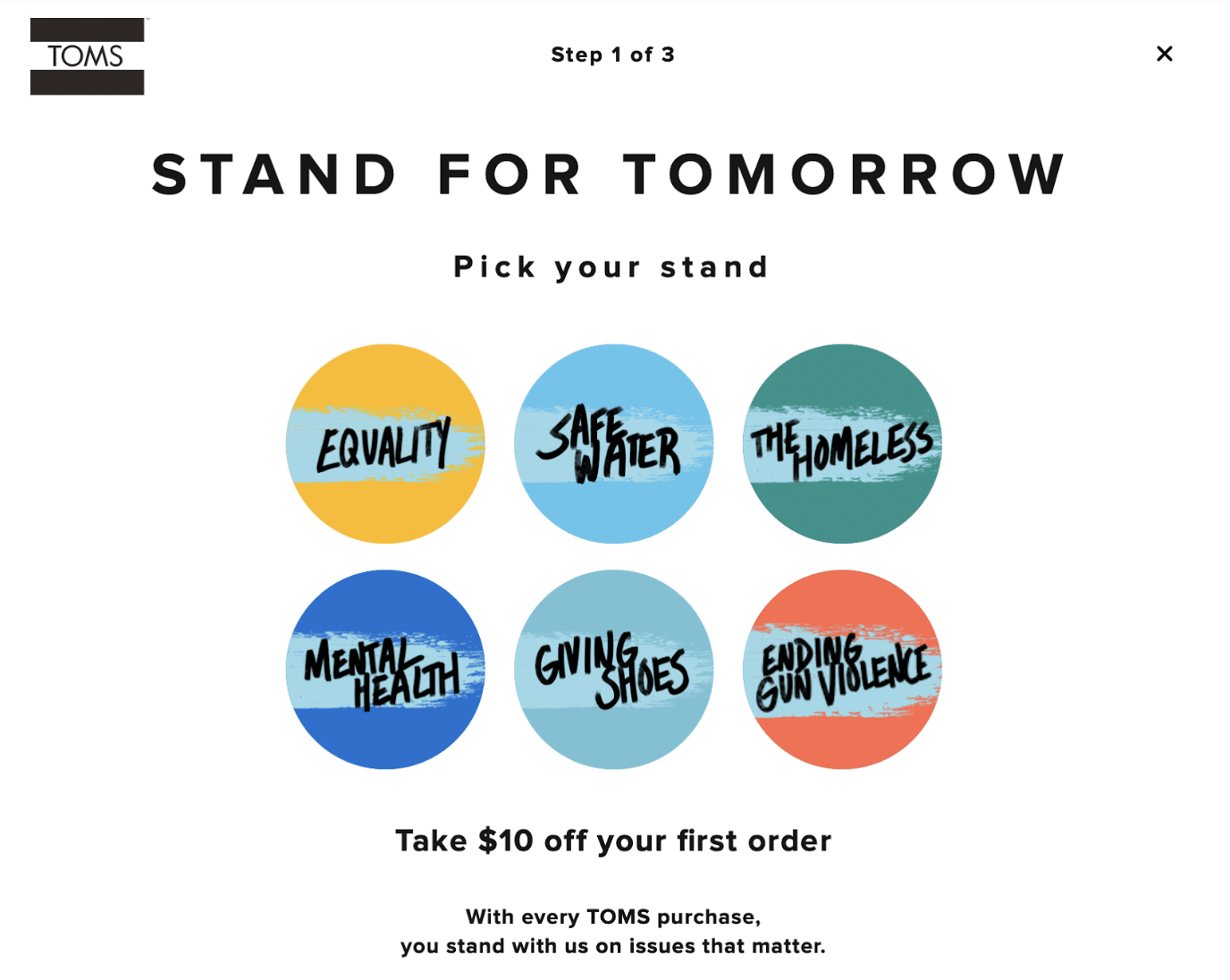
Image: Toms
In addition to contests and causes, keep your brand relevant 365 days a year by centering your content around different holidays and events on the calendar.
This takes advantage of the seasonal nature of fashion and ensures your audience engages with you year round. Even if yours isn’t specifically a fashion brand, like our earlier example of selling travel gear, you can still use this approach.
Produce content on popular seasonal destinations — mountains in the winter, beaches in the summer — and then get your audience involved by asking them to post pictures at their favorite spots.
Each brand is different, but find the angle that will get your target audience involved. Few things provide better promotion than an adoring fan willingly showing off the products they purchased from you or engaging with content you produce.
Final Thoughts
Fashion is all about creating an image and a lifestyle. Content marketing is a natural extension of this mindset and can serve your brand well. Understand your audience wants and needs — their desires — and produce content that shows your brand is the one to fulfill them.